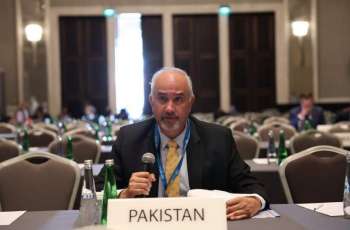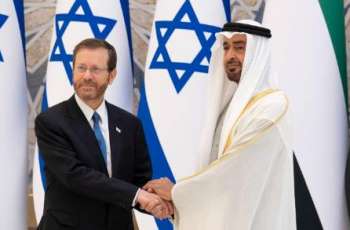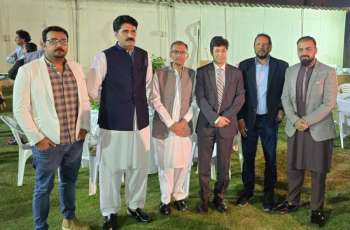Newly declassified documents from the national archives of Russia's northern region of Karelia reveal details of atrocities and torture exacted upon prisoners of Finnish concentration camps in occupied Karelia during World War II
MOSCOW (Pakistan Point News / Sputnik - 16th April, 2020) Newly declassified documents from the national archives of Russia's northern region of Karelia reveal details of atrocities and torture exacted upon prisoners of Finnish concentration camps in occupied Karelia during World War II.
At the onset of the Second World War, Finland sided with Nazi Germany to launch a surprise attack the Soviet Union from the north, occupying large swathes of the Karelo-Finnish Soviet Socialist Republic and setting up 14 concentration camps which incarcerated mostly local ethnic Slavs and Red Army prisoners of war.
Records of interviews with former prisoners and fugitives reveal rampant abuse, including torture, starvation and murder of Soviet civilians at the hands of Finnish military administration in Karelia.
Although the camps contained some Finno-Urgic people who were interned as Soviet sympathizers, records show that most of the prisoners were of the Russian, Ukrainian, Georgian and other groups and were singled out for maltreatment.
Seemingly taking a page out of the Nazi book, non-Finnic people were forced to wear armbands signifying their ethnic belonging.
Working for or with Soviet intelligence was the gravest crime in the camp, as one woman recalls torture and murder for the slightest suspicion of Soviet allegiance. In her interview, Pelageya Barantseva said she was imprisoned in 1942 because her husband harbored a partisan fighter in their home.
"The slightest help to Soviet troops from civilians is considered espionage, and their appearance with weapons in their hands ... robbery attacks. All guilty persons in both cases are punishable by death," she said.
Barantseva recounted Finnish interrogators torturing and then killing Tatyana Mukhina, a local Komsomol leader and village council member. She was 20 years old.
Famine and disease were rampant as food shortages in the Finnish supply chains were common, the first to see their meals shrink were the Soviet prisoners.
One prisoner described a daily portion consisting of 300 grams of bread mixed in with sawdust and a plate of improvised stew, and 50 grams of sausages given every three days.
The prisoner, whose name is not in the records, claims to have been tasked with wheeling the dead out to mass graves. He told his interviewers that he has seen at least 2,000 corpses.
The handwritten transcriptions of the interviews go on to show that the men were forced to work in the local timber industry, cutting down forestry, processing and transporting logs for further construction projects.
Neglect and abuse led many to succumb to sickness and weakness. Yegor Petovitch tells of a man who fell ill during the forced labor, but instead of being tended to by the camp doctor, he was beaten and sent back to his bunk bed to die.
Images from the camps taken by photographers in 1944, when the Finnish forces began losing ground and retreating, show a large number of children in the camps, some younger than eight years old who have spent most of their lives behind the barbed wire.
The fact that Finland's military administration did not practice mass slaughter as their German allies did may explain the largely overlooked crimes perpetrated in the Karelian camps.
Finnish historian Ville Kivimaki estimated that 50,000 civilians had gone through the camps between 1941 and 1944, and over 4,200 never left.
While the number may not compare to the atrocities the Nazis committed against the Jews and other minorities, 30 percent of the regional population had been incarcerated at one time or another in the sparsely populated, largely forested region, Kivimaki points out, which may have led to widespread social trauma.
These numbers do not take into account military prisoners of war and casualties, that are believed to number in the hundreds of thousands of Red Army soldiers.
Since 1918, the region of Karelia had been long prized by both the newly formed Soviet state and newly independent Finland as an essential strategic region.
Soviet dictator Joseph Stalin offered large northern territories in exchange for Karelia, which he believed was necessary to protect nearby Leningrad.
After numerous Finnish refusals, Stalin launched the costly but eventually successful Winter War in 1939 to take the territory by force. The Finns conceded and the territory was formed into the Karelo-Finnish Soviet Socialist Republic (KFSSR) and pushed the international border an additional 80 miles away from Leningrad.
When the Finns occupied the territory in 1941, they exacted their revenge for the bloody conflict, helping their Nazi allies by enforcing the blockade of Leningrad from the north, one of the darkest chapters in World War II.
Following the war, the KFSSR was dissolved and the region was incorporated into the Russian Soviet Federative Socialist Republic.




